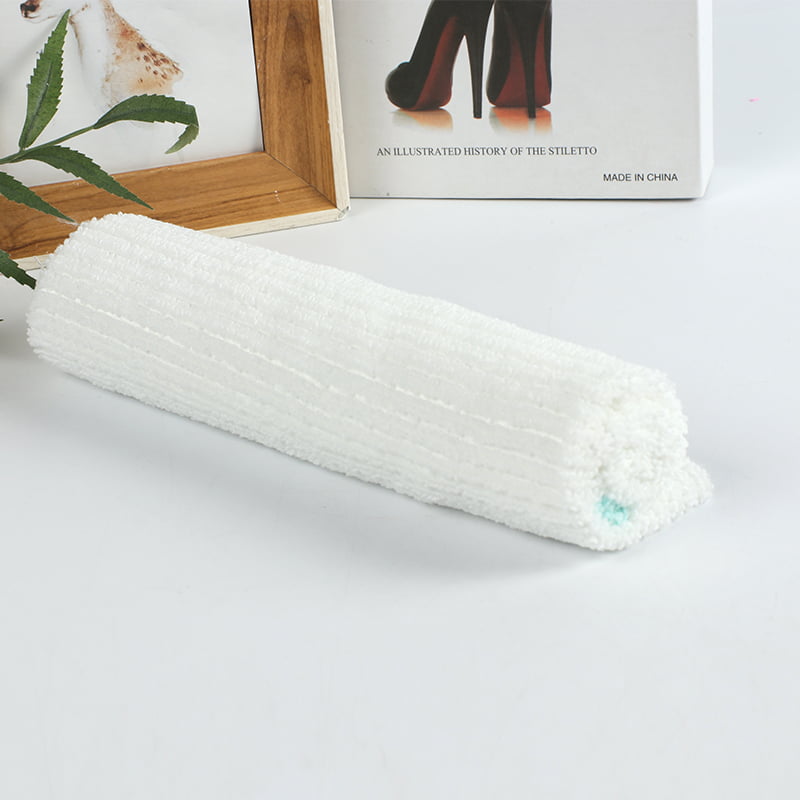We are a national high-tech enterprise. At present, there are many kinds of self-woven and cooperatively processed fabrics, including microfiber warp-knitted towel cloth, weft-knitted towel cloth, coral fleece, etc.
Absolutely, choosing absorbent towels for healthcare facilities or medical environments requires careful consideration due to the unique requirements and challenges in these settings. Here are some special considerations:
Absorbency and Fluid Management: Healthcare environments demand towels capable of efficiently managing various fluids, from bodily secretions to disinfectants. Optimal absorbency is crucial not only for maintaining cleanliness but also for preventing the spread of pathogens. Look for towels engineered with specialized materials, such as high-grade cotton blends or advanced microfiber constructions, designed to rapidly absorb and retain liquids without compromising integrity or performance.
Material Selection: The choice of towel material significantly influences its performance, durability, and suitability for healthcare applications. In addition to high absorbency, materials must meet stringent criteria for durability, hypoallergenic properties, and non-abrasiveness to safeguard patient comfort and minimize the risk of skin irritation or allergic reactions. Conduct thorough evaluations of material compositions, considering factors such as fiber density, weave patterns, and surface textures to identify towels that strike the balance between absorbency, softness, and resilience in demanding healthcare environments.
Antimicrobial Properties: In the ongoing battle against healthcare-associated infections (HAIs), integrating antimicrobial properties into towels represents a proactive strategy for enhancing hygiene standards and reducing the risk of cross-contamination. Antimicrobial treatments or coatings applied to towel fabrics can effectively inhibit the growth and proliferation of harmful microorganisms, including bacteria, viruses, and fungi, thereby creating an additional barrier against infectious pathogens.
Color Coding: Implementing a comprehensive color-coded system for towels serves as a visual aid to reinforce infection control protocols and streamline operational workflows within healthcare facilities. By assigning distinct colors to towels designated for specific tasks or areas, such as cleaning, patient care, or surface disinfection, healthcare personnel can readily identify and utilize the appropriate towels without confusion or error.
Size and Thickness: Tailoring towel size and thickness to specific tasks and procedures optimizes functionality and usability in healthcare settings, where diverse requirements necessitate versatile solutions. Evaluate the functional requirements of different areas within the facility, such as patient rooms, surgical suites, or diagnostic laboratories, to determine the appropriate towel dimensions and thicknesses for each application. Thicker towels may be preferable for tasks requiring absorbency and durability, while thinner towels offer greater flexibility and maneuverability for routine cleaning and surface disinfection.
Ease of Laundering or Disposal: The effective management of reusable towels necessitates the implementation of standardized laundering and sterilization protocols to ensure cleanliness, safety, and compliance with infection control standards. Establish comprehensive procedures for collecting, sorting, washing, drying, and storing towels in dedicated laundering facilities equipped with equipment and disinfection technologies. Collaborate with accredited laundry service providers or internal sterilization teams to streamline operations, minimize turnaround times, and uphold stringent quality assurance measures throughout the laundering process.
2PK antibacterial warp knitted two control one cation/kitchen cleaning


 English
English Espaol
Espaol русский
русский عربي
عربي 简体中文
简体中文
















